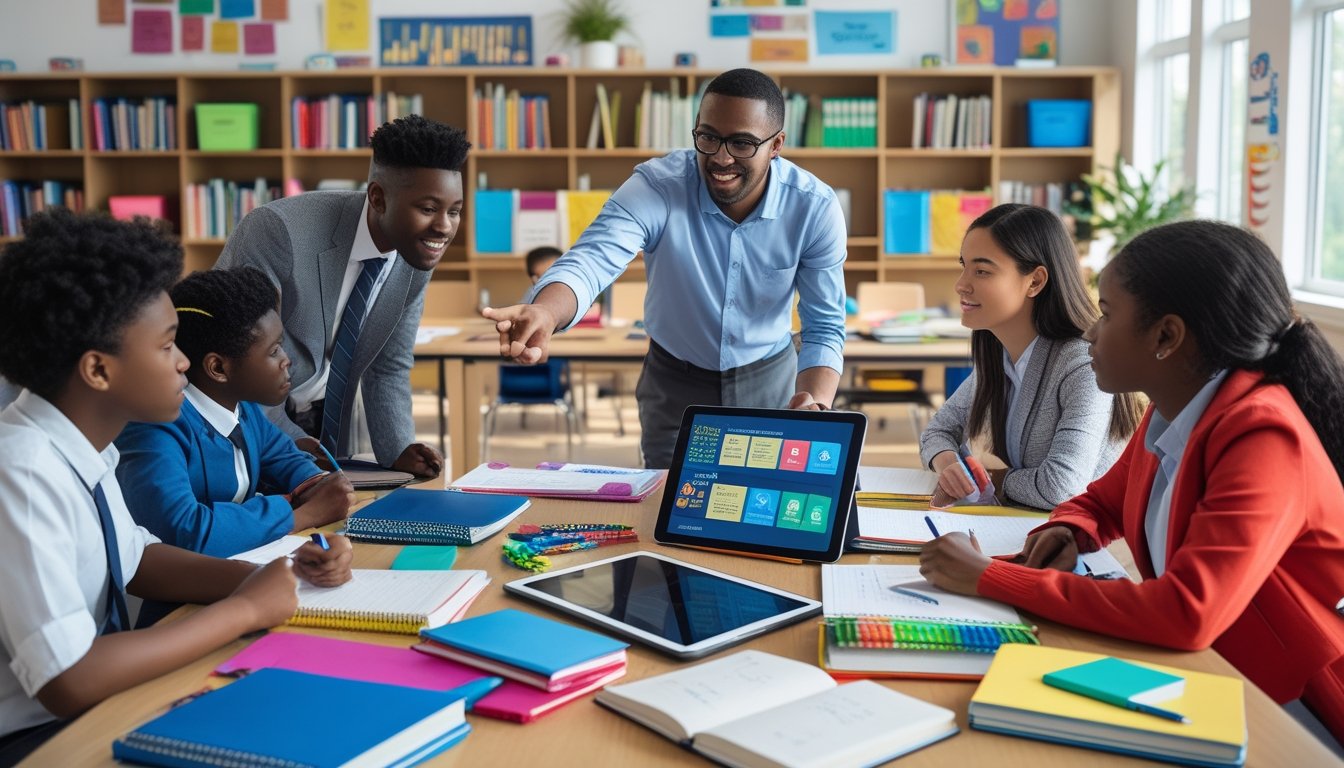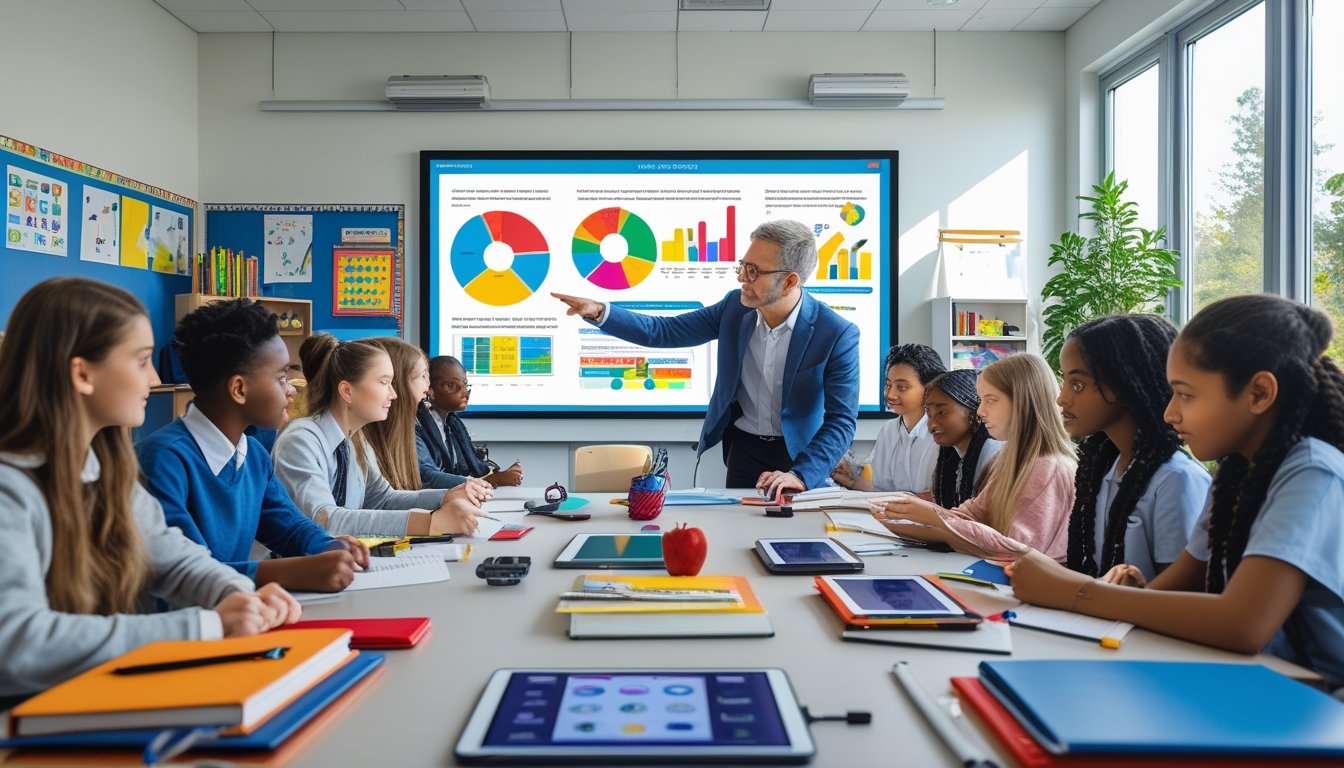Late updated: 29 May 2025 15:05
Written by:
Tips For Choosing The Best Educational Resources: A Comprehensive Guide
As educators and learners, we constantly strive to find educational resources that effectively engage and inspire. With the plethora of materials available, making the right choice can be challenging. Selecting the best educational resources involves aligning them with our specific goals, the learning styles of students, and the context in which they will be used.

While digital resources offer interactive and diverse content, traditional materials provide a tactile experience that still holds value. In our quest to discover what works best, balancing technology with hands-on experiences ensures a holistic approach to education. Recognising the importance of this blend can dramatically enhance the learning experience.
Fostering a learning environment where resources not only inform but also motivate is key to success. Understanding what works for us can transform not just education, but also the way we perceive learning as a lifelong journey.
Key Takeaways
- Resources should align with goals and student needs.
- A mix of digital and traditional materials is beneficial.
- Motivation and engagement are crucial in resource selection.
Key Criteria for Selecting the Best Educational Resources

Selecting the right educational resources is crucial to effective teaching and learning. We must consider how these resources match learning goals, accommodate various learning styles, and ensure credibility. These aspects are key to creating an engaging and pedagogically sound learning environment.
Aligning Resources With Learning Objectives
When choosing educational resources, it's vital to ensure they align with specific learning objectives. Resources must support the curriculum and help students achieve stated goals. For example, if a key objective is improving critical thinking, resources should include activities that prompt analytical skills.
Curriculum integration is also essential. This involves using resources that bridge theoretical knowledge with practical application. Such integration helps students apply what they learn in real-world scenarios.
We must ensure resources are not only relevant but also age-appropriate. This ensures that the content is suitable for the intended audience, fostering better engagement and understanding.
Catering to Diverse Learning Styles
Every student learns differently, so catering to diverse learning styles is crucial in educational resource selection. We should include resources that address visual, auditory, and kinaesthetic learners.
For instance, visual learners benefit from diagrams and videos, while auditory learners prefer discussions and lectures. Kinaesthetic learners engage more through hands-on activities. Therefore, a varied approach helps enhance scholastic achievement across the board.
By using a blend of instructional materials such as textbooks, multimedia, and interactive tools, we can address the individual needs of students. This variety helps ensure that every learner has the opportunity to succeed.
Evaluating Content Credibility and Accuracy
In evaluating educational resources, credibility and accuracy are paramount. We should scrutinise the reliability of the source to ensure factual and up-to-date content. This is critical, as inaccurate information can lead to misconceptions and hinder academic progress.
One approach is to cross-reference materials with trusted academic sources. Ensuring references and data in the resources are verifiable supports a rigorous educational standard.
We must also consider the author’s expertise and the publisher's reputation. These elements contribute significantly to the trustworthiness of the material, ensuring that only high-quality, accurate information is presented to learners.
Enhancing Learning Through Optimal Resource Integration

Integrating educational resources effectively can amplify the educational experience by fostering critical thinking and leveraging technology, thus stimulating active engagement and participation during learning. The incorporation of a mixture of innovative strategies creates a more interactive and supportive environment.
Promoting Critical Thinking and Problem Solving
By crafting activities that challenge learners' cognitive capabilities, we encourage the development of critical thinking and problem-solving skills. Real-world scenarios can serve as powerful tools in this regard. These scenarios allow students to apply concepts in practical settings, facilitating a deeper understanding of subject matter.
Using case studies and problem-based learning encourages students to explore different perspectives and solutions. It is crucial for educators to facilitate discussions that guide learners in analysing and evaluating situations critically. Enabling open dialogue and inquiry also promotes inquisitive thinking.
Utilising Technology and Digital Platforms
Integrating technology into educational practices can create a more dynamic learning environment. Digital platforms and e-learning tools provide unmatched access to a wealth of resources, from interactive modules to educational videos on platforms such as YouTube. This extends learning beyond the classroom confines.
By incorporating technology integration, students can interact with content in diverse formats, enhancing both engagement and comprehension. This approach also assists teachers in monitoring progress and tailoring instruction to meet individual needs, which is essential for maintaining interest and promoting success.
Incorporating Quizzes and Active Learning Activities
Active learning strategies, including quizzes and interactive tasks, ensure students are engaged and retaining information. These methods offer immediate feedback, aiding learners in identifying areas for improvement and reinforcing knowledge. Quizzes serve as effective tools for assessing understanding and stimulating recall.
Introducing exit tickets at the end of lessons can provide insights into student learning and inform future teaching strategies. Active learning activities encourage students to participate and interact with both the content and peers, enhancing collaborative skills and promoting an enriching learning experience.
Through professional development, educators can refine their teaching practices and adapt classroom management strategies to incorporate these techniques effectively, thus optimising educational outcomes.
Frequently Asked Questions
Our goal is to address common concerns about choosing educational resources. This includes criteria for selecting materials, strategies, and preparation considerations, all of which are crucial for optimal teaching and learning outcomes.
What criteria should be applied when selecting instructional materials?
We should ensure that materials are age-appropriate and align with curriculum standards. It's also important to consider cultural relevance and adaptability for diverse learning needs.
Why is it crucial to choose appropriate educational resources?
Selecting the right resources directly impacts student engagement and understanding. Effective materials can enhance learning experiences, making complex subjects more accessible.
How do you ascertain the quality of educational resources?
We can assess quality by examining the content's accuracy, coherence, and pedagogical soundness. Feedback from educators and reviews can also provide valuable insights.
Which factors are most important when choosing an instructional strategy?
We should focus on learning objectives, student learning styles, and available resources. Keeping flexibility in mind allows strategies to be adjusted based on student needs.
What considerations are essential for the preparation of effective instructional materials?
Materials need to be clear, concise, and well-structured. Incorporating visual aids and interactive components can greatly enhance comprehension and retention.
How should teachers evaluate and select teaching-learning materials for their classroom?
Teachers should consider the relevance to their specific subject and the ease of integration into existing lesson plans. Pilot-testing materials in a classroom setting can also help determine their effectiveness.
